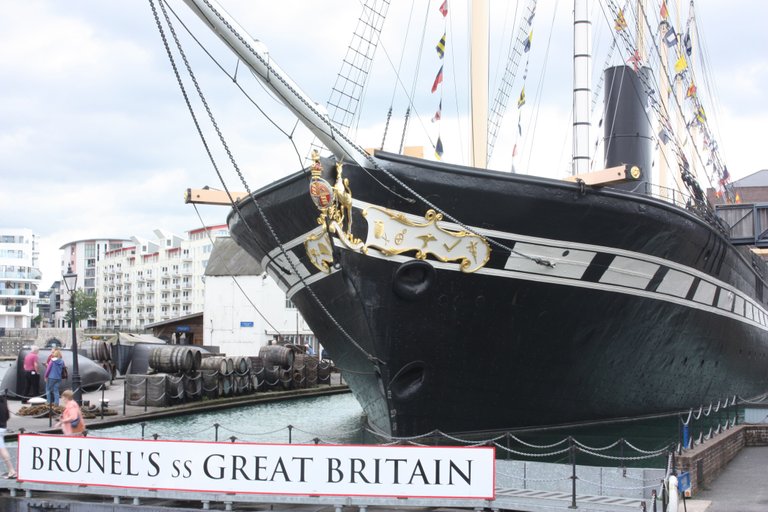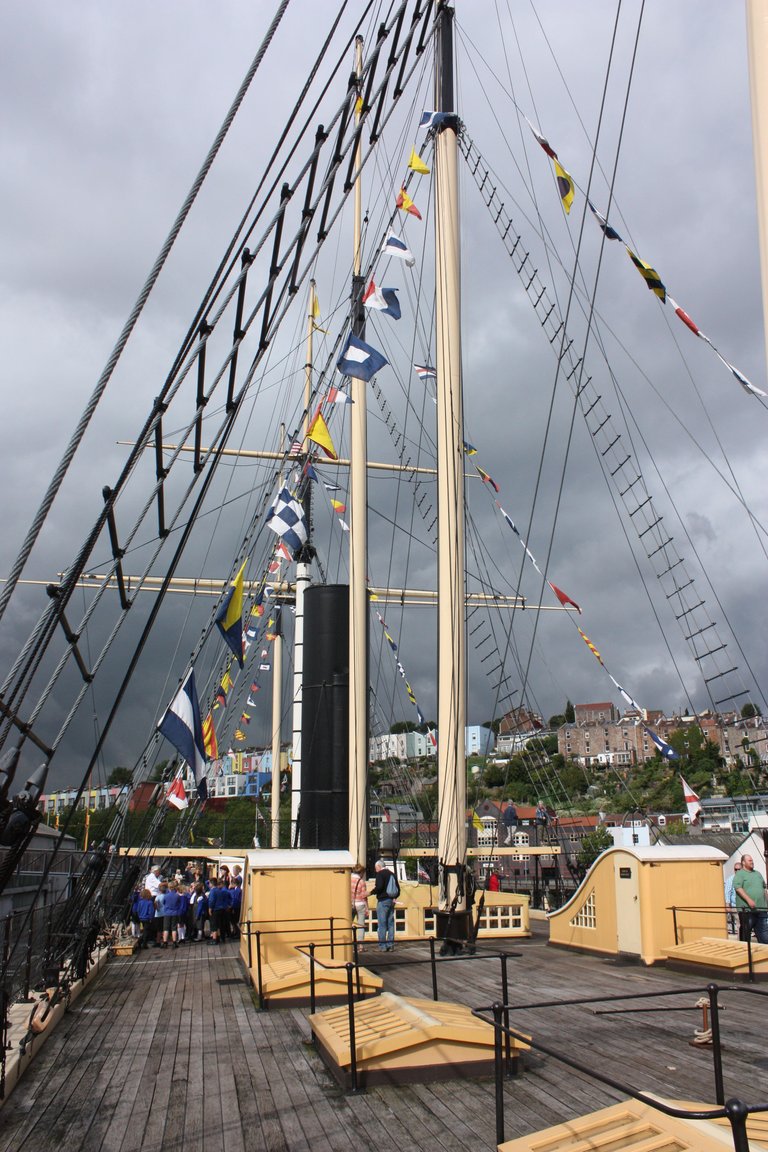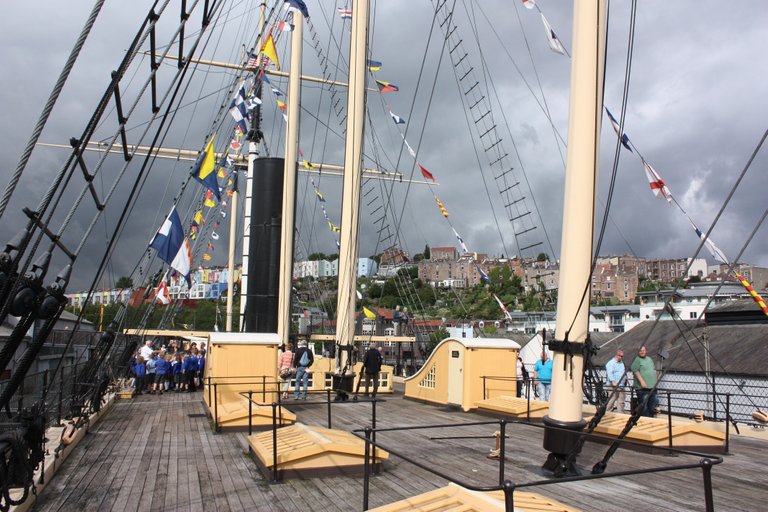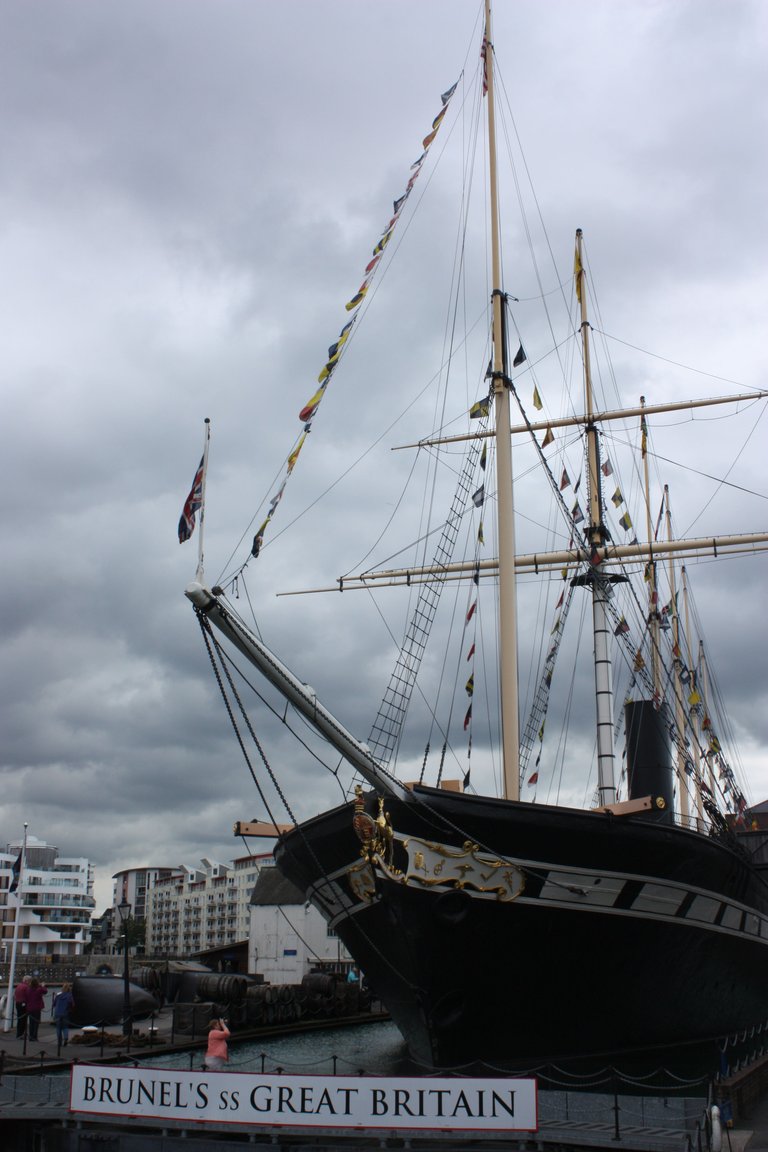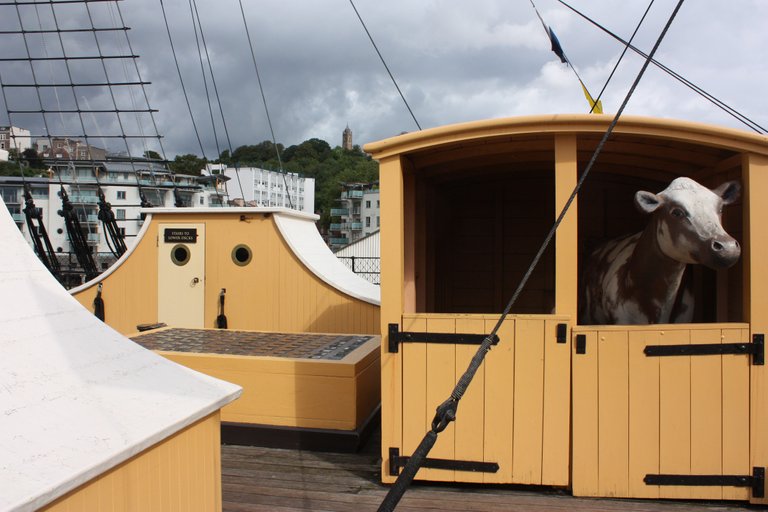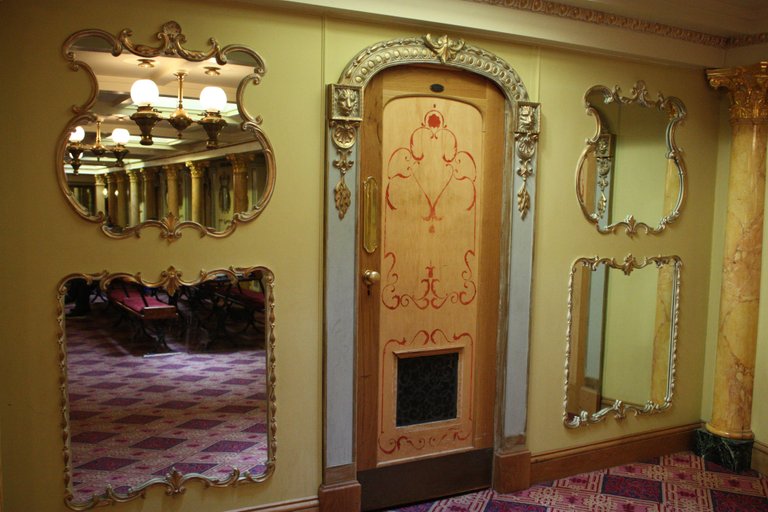Bristol is the home port of the SS Great Britain, built in 1843. The ship is a former passenger ship, the longest in the world from 1845 to 1854. She was designed by Isambard Kingdom Brunel for the Great Western Steamship company’s transatlantic service between Bristol and New York. The Great Britain was the first ship to be built from iron and be equipped with a screw propeller. She was the first iron steamship to traverse the Atlantic, crossing the ocean in a fortnight in 1845.
The ship is 322 ft (98 m) in length with a 3,400-ton displacement. When launched she was more than 100 ft longer and 1,000 tons larger than any ship previously built. Her beam was 50 ft 6 in (15.39 m) and the depth of her keel from the main deck was 32 ft 6 in (9.91 m).
In 1846, due to a navigational error of gigantic proportions, SS Great Britain ran aground at Dundrum Bay on the northeast coast Ireland. She was there a year before she was refloated and returned to Bristol. The costs of this operation forced her owners out of business and in 1852 she was sold for salvage and repaired. From 1852 , SS Great Britain carried thousands of people, mainly immigrants, to Australia. Other passengers included gold prospectors hoping to be part of the Australian gold rush in the 1850s, the first All-England cricket team to visit Australia, and the novelist Anthony Trollope who is supposed to have written an entire book on his trip across the sea. Just three years after being converted to sail in 1881, she was retired to the Falkland Islands where she was used as a warehouse, quarantine ship and coal bunker before being scuttled in 1937.
In 1970, following a cash donation by the great patriot Sir Jack Hayward that paid for the vessel to be towed back to the UK, SS Great Britain was returned to the Bristol and the massive job of recreating her glory days began.
I visited the ship on a lovely, sunny day with the wind blowing steadily down the river from the sea. After buying my ticket, allowing me to return any number of times for a visit in the following year, I walked to the Dockyard Museum containing the story of the SS Great Britain from conception to renovation. There’s all manner of ship’s paraphernalia from ropes to pulleys and passenger mementoes including voyage diaries.
Once on board I took a moment to look along the length of the vessel and the first impressions I had were of strength, solidity, and safety. The ship is dressed with flags and is ready for departure. SS Great Britain was originally provided with one square-rigged and five schooner-rigged iron masts. They were fastened to the spar deck with iron joints and most were hinged to allow lowering during strong headwinds. On this main deck pigs and chickens were kept to provide fresh meat and fresh eggs.
SS Great Britain had four decks, a crew of 120, and was initially fitted to accommodate a total of 360 passengers, along with 1,200 tons of cargo and 1,200 tons of coal. She was used for special trips, for example to take soldiers and horses to The Crimean War and this situation is faithfully reproduced on the bottom deck of the ship. The steerage accommodation shows how close people lived to each for months at a time on voyages to Australia and the claustrophobia was almost tangible. The first-class passengers had their own beautifully laid out state dining room with candelabras, china plates, and waiters. Other areas show surgery being performed, the cramped kitchen quarters where the meals were produced, and the officer’s quarters.
The SS Great Britain appears to be floating on a glass sea. In reality, the ship is in a dry dock, with the glass sealing off the iron bottom of the ship from the outside, so large dehumidifiers under the glass can stop the ship from corroding. Visitors can walk along the massive hull and inspect the massive propeller.
On the other side of the docks, within sight of the SS Great Britain, is moored another wonderful boat called The Grain Barge. This boat was also built in Bristol, in 1936, and during its working life was towed across the Severn Estuary to Cardiff with cargoes of wheat and barley. The Bristol Beer Factory bought and refitted the barge in early 2007. The Grain Barge has two bars - the main harbourside lounge and dining room and a “Hold Bar’ function room, which provides a venue for live music and private parties. Drinkers can also sit on the upper deck with views over the harbour area.
When I was there the Grain Barge had around ten beers to choose from - they always have Bristol Beer Factory beers plus three guest cask beers and two guest keg beers from the ever-expanding number of UK craft breweries.
I was walking along the waterside after visiting Clifton Suspension Bridge and I popped in for a visit. I ordered a pint of Sunrise Golden Ale and sat down on one of the comfy sofas to read the newspaper, just one of the many up-to-date publications and magazines available to read. The sun was streaming through the window and life felt really good.
